






Light is Adventure. Let OSRAM light the way on your next adventure! Light is Adventure. Let OSRAM light the on next


























Light is Adventure. Let OSRAM light the way on your next adventure! Light is Adventure. Let OSRAM light the on next



















‘THE MOST INTENSIVE TESTING
ANY RANGE ROVER HAS EVER ENDURED.’ That’s quite a claim, but it’s what JLR says the forthcoming new Range Rover Electric is currently being put through as it endures temperatures exceeding 50°C in the deserts of the United Arab Emirates.
These tests make for eye-catching marketing, of course. But there’s much more to it than just that. The vehicle will debut a new Intelligent Torque Management system which allocates the job of managing wheelspin to each individual electric drive control unit. According to JLR, this reduces the reaction time at each wheel from around 100 milliseconds to as little as 1 millisecond – allowing the system to negate the results of traction loss more effectively than ever before.
This has been demonstrated in the UAE in particular when driving on fine sand. JLR says that during testing, its vehicles are required to scale it five times without showing any reduction in performance in order to get a pass mark – and that the Range Rover Electric completed the feat with flying colours. ‘Well balanced weight distribution and an advanced suspension system maintain control and stability effortlessly through the sand, performing with
ultimate composure. Uncompromised traction systems provide instant torque allowing for quick acceleration, responsiveness and a refined drive even when navigating diverse dune formations.’
The vehicles were also tested in urban conditions, which in temperatures of 50°C and up to 90% humidity pose another kind of challenge to an electric powertrain – especially when no compromise at all is acceptable in the quality of the cabin environment.
‘There is no place more challenging for a climate system,’ explains JLR. ‘From dynamic desert climbs to sun-soaked city cycles, nothing is left unexplored in pursuit of maximum client cabin comfort and vehicle capability.’ To achieve this, the Range Rover Electric features a new thermal management system designed to intelligently control heat distribution around the vehicle; the climate in the Middle East is the ultimate test of its efficacy.
‘A hot climate is one of the most challenging for any battery electric
vehicle, because of the need to cool the cabin and optimise battery performance at the same time,’ explains Thomas Müller, JLR’s Executive Director of Product Engineering. ‘The additional challenge of driving on sand requires controlled low-speed torque, so our specially developed traction control and thermal management systems work in harmony to ensure power delivery is unaffected.
‘Our tests have shown that in this climate, repeatedly driving the equivalent of 100 metres uphill on fine sand, Range Rover Electric matches the performance of its ICE equivalents – in some instances, even surpassing them – thanks to the introduction of these new features.’
Final testing of the Range Rover Electric continues as JLR ‘refines and crafts the epitome of Range Rover luxury.’ No prices have yet been announced, but you’ll be able to put your name down for one at some point during the next 12 months.



















The Green Lane Association has won legal actions against illegal Traffic Regulation Orders (TRO) in two parts of England and Wales – saving a number of rights of way from wrongful closure. The High Court cases – one in Conwy, North Wales, the other in Wiltshire – are the latest in a series of successful legal challenges the Association has undertaken in defence of Britain’s rights of way.

In both cases, the local authorities declined to contest the court actions and costs were awarded costs to the Association.
In the first case, the Association sought to overturn a broad TRO which Wiltshire Council had imposed on various Byways Open to All Traffic (BOATs) west of Marlborough. Including routes at Avebury, Berwick Bassett, Fyfield, Winterbourne Bassett and Winterbourne Monkton, these were originally imposed in an attempt to close one of the few stretches of the Ridgeway to have survived the 2006 NERC Act. These lanes are already closed during the winter months to protect the ground from damage when it’s at its most vulnerable. In the years before Covid, however, the local authority took to using Temporary TROs to fill in the gaps – creating a piecemeal permanent
ban. More recently, it attempted to formalise these as a full closure – which is when GLASS stepped in.
‘The Green Lane Association’s challenge was based on several factors,’ the Association says. ‘Including that the council had extended a 2023 Experimental Traffic Regulation order (ETRO) without properly considering the results of the experiment and that the council had not consulted widely enough about the 2023 ETRO, preventing the Association from objecting at the time.’
The second case saw the quashing of a TRO imposed by Conwy County Borough Council on a route near Llanrwst known as Siambar Wen Llanrwst, or Bro Garmon. This challenge was raised on the basis that the council failed to present sufficient evidence to the relevant cabinet member that would
let him to make an informed decision on issuing the TRO.
‘This is a great result for everyone who wants to access the countryside in a responsible way without encountering accessibility problems,’ said Green Lane Association chairman Chris Mitchell. ‘Although our strong preference is to work with local authorities to maintain these public rights of way for all users, we will take legal action to protect this access where necessary.
‘While we recognise this as a significant success in our fight against the unfair exclusion from public rights of way of any recreational users, the Association is reminding its members, and other users, that they are expected to comply strictly with our Code of Conduct when green laning, especially given the expected seasonal weather.’

















PHOENIX AUTOMOTIVE EVOLUTION
IS A NEW NAME IN THE LAND ROVER MARKET, but you’re probably more familiar with it than you realise.
The business grew out of another company that’s already well known among Defender owners – Worcestershire-based Defender Rear Tubs. This was (and is) already a well respected operation, but as the name suggests it’s very specific in what it does. Phoenix Automotive Evolution is the result.
‘While our Defender Rear Tubs business has progressed and evolved,’
the company explains, ‘so too have the requests for other Defender parts and panels and we found we had outgrown our name!
‘Phoenix Automotive Evolution has been established to meet this demand while also retaining Defender Rear Tubs as a sub brand.’
Phoenix specialises in supplying replacement parts and panels. It offers a full range of components: axles and suspension, bulkheads, chassis, panels, seat boxes and of course its very own Defender Rear Tubs.



The company can also build you up a rolling chassis. Or if you’ve got a knackered old Landy in need of the full works, it also offers a refurbishment service designed to give it a new lease of life.
‘We’re always up for a challenge,’ they continue, ‘and have worked on some bespoke orders too, such as a Defender Camper Trailer and converting an ex-utility Land Rover to repurpose it.
‘So if your Defender has seen better days, whether it is from rust and corrosion or dents and accident

damage, do get in touch for our friendly service and advice.’
That advice will come from people who existing clients will already know. ‘Same team, same customer service, more products!’ is how the company puts it.
Something else that remains the same is the quality of the parts you’ll get. All its panels are made to a high standard from 2mm aluminium. So they’re going to last – all you need to do is prime them and paint them. And while quality doesn’t come cheap, customer



care costs nothing; the company also offers a rear tub refurbishment service, where they just repair what’s necessary and leave the rest alone.
It all sounds like a business that’s thriving more and more all the time. The might say they’ve outgrown their old name – but it looks more like their new name has grown to suit the company that carries it. You can find out more about Phoenix Automotive Evolution at www.phoenixautoevolution.com, while Defender Rear Tubs remains at www. defenderreartubsltd.com.




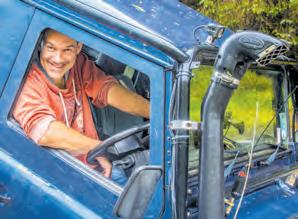
There’s always been a bit of a schism between off-road and lifestyle Defender builds. Until a few years ago, anyone who modified one gave it a lift, a cage, a winch and all that malarkey – but then the bling craze came along and suddenly it was all about leather, shiny metal and nice paint. Two extremes and never the twain shall meet.
Never or, at least, seldom.The 90 in which I’m pictured above was built by Twisted in 2006 with the full off-road works, but it was based on an XS – the highest-spec model Land Rover did at the time. And there have been sporadic examples since then of vehicles built to be seriously good off-road but nice on the road too. One of them, indeed, is featured in this issue.
Of course, there was a very early example of a Defender built to be seriously good off-road but nice on the road too. It was called the Range Rover. Land Rover came up with the idea 55 years ago – not an urban status wagon for millionaires, but a utility vehicle for people who could afford something more luxurious than an 88 or 109. The first Rangey cost £1995, which is the equivalent of a bit less than £27,000 now. Dacia Duster money…
I have no doubt that today’s Range Rover is a deeply wonderful thing, but it’s nobody’s utility vehicle. The sort of Defender that blends a little of the bling school with a bit of the off-road, on the other hand, could certainly be seen as the true inheritor of what the Range Rover once was. And, indeed, what the Defender itself once was.

The fact is, you don’t need to choose between a showy one or an off-road one. Off-road builds are eye-catching by nature, after all. But more than that, while you wouldn’t want to splash out on huge, wide alloys and sparkling mica paint on a truck that’s going to work for its living in the muck and bullets, you can still make a utility truck look very presentable indeed. And you can do so without compromising what it’s best at – which is exactly the trick Land Rover pulled off way back in 1970.






WILDPEAK A/T TRAIL


WILDPEAK R/T01
Wildpeak A/T Trail - Rugged Crossover Capability
Built for adventure delivering rugged off-road capability without compromise on the open road. Featuring the Three-Peak mountain snowflake, the Wildpeak A/T Trail encourages adventure seeking crossover owners to discover true all-weather capability.
Wildpeak R/T01 - Bold, Rugged Terrain Capability
Developed for 4x4’s and SUV’s this tyre sets the standard for the new rugged terrain tyre category. Providing the tenacious off-road traction of a mud tyre while retaining the tread life and stability of an all-terrain, professional Off-Road tyre with POR marking. For further information and to find your local stockist please visit www.falkentyre.com/en or www.4site4x4tyres.co.uk




ROVER, what to do about its tail lights is a surprisingly common stumbling block – and the sort of thing you can guarantee you won’t think about until you trip over it. Using trailer lights is a frequent solution, but it can look very odd – unlike these extremely cool multi-function units from Car Builder Solutions. With a maximum diameter of 142mm and a depth of 32mm, these lights might look a bit familiar if you’ve spent any time sitting behind an Ineos Grenadier. They’re not actually the same, but the idea is certainly similar, with three concentric rings giving you neon-like tail
lamp while bright lights in the middle and bottom of the array provide stop, fog and indicator functions. Weighing 475g apiece and mounted to any flat surface via two M6 studs at 45mm centres, the lights have their own power pack with a waterproof connector and two metres of cable. The internal sequencing electronics for the indicator function need no additional relay, instead piggybacking on to the vehicle’s existing unit. There are cheaper ways of doing it, but as finishing touches go this would be a sure way





















































































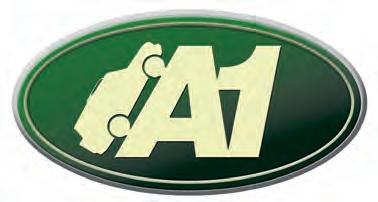
Price: £35.91
Available from:
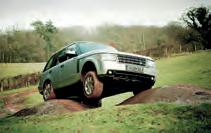
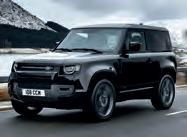




THIS WON’T PLEASE THE JACKABLE ROCK SLIDER BOYS. But if you’ve got a new-shape Defender and its side step plates are starting to look tired from life’s little incidents, Britpart has a simple way of bringing them back to their best. Made from suitably tough ABS plastic, these Gloss Black Side Step Protectors allow you to switch things up without having to change the entire step unit. They come pre-fitted with adhesive tape and are supplied with a prep wipe for secure installation, and they’re ready to fit as is or paint
as you desire.
As supplied, one set of the Side Step Protectors ought to be enough to look after a Defender 90. If yours is a 110 or 130, however, you’ll need a couple. Just don’t try putting your high-lift under them.
Price: £244.21
Available from: maltings4x4store.co.uk, DA3979

THE BACK OF A NEW-SHAPE DEFEND-
ER 90 is not the roomiest place in the world, so you want to be able to make the most of every scrap of space in there. And since you’ve paid a minimum of £58,310 for it to be yours, £244.21 doesn’t sound like a lot to help you do just that.













That’s what it takes to get hold of Britpart’s Mesh Luggage Rack Shelf Organiser from Maltings 4x4. Designed specifically for the new-shape 90, this adds a self-contained storage area behind the seats. With a total usable area of 935 x 250mm and depths of 100mm up front and 130mm at the back, its size makes it ideal for items like umbrellas, rucksacks and handbags.

Price: £480.98
Available from: maltings4x4store.co.uk, TF3370


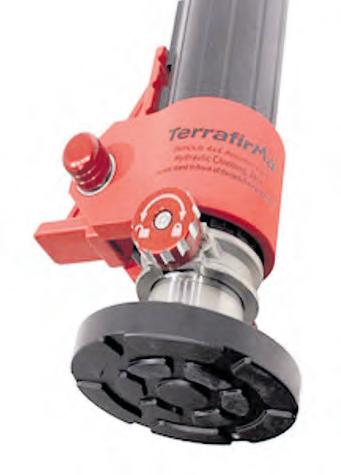



















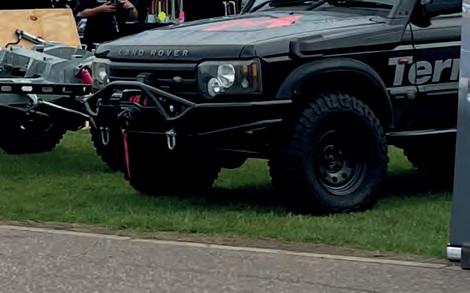









Price: Varies
Available from: davanti-tyres.com
DAVANTI HAS BEEN IN THE UK FOR SEVERAL YEARS WITH ITS TERRATOURA ALL-TERRAIN, a solid all-round performer that does a sterling job of bridging the gap between the premium and budget ends of the market. It’s a good bit of kit at prices that don’t make you cringe, in other words.
Now there’s another good bit of kit to go alongside it, because Davanti has followed it up with the new Terratoura Mud-Terrain (M/T). This has a more aggressive tread pattern along with a rugged

construction designed to let it get you where you want to go offroad without getting wrecked in the process. Most are classified as Professional Off-Road, making them exempt from certification, however a few sizes do carry the EU label.
Features of the Terratoura M/T include:
• Prominent shoulder blocks which continue on to the sidewall to help maintain traction in situations with minimal lateral grip
• Wide shoulder grooves for efficient dispersion of mud, sand and other debris
• Notched alternating shoulder blocks arranged in a ‘sawtooth’ pattern to bite into rutted tracks and cling on to rocks from all steering angles
• A robust carcass construction for high load endurance and excellent resistance to damage and punctures in extreme conditions
The Terratroura M/T underwent development testing in a variety of conditions at sites including proving grounds in northern Finland, where it faced punishing arctic conditions, and the UK. Here, its performance on mud, sand and grass was put to the test, as was its braking capability on loose gravel.
‘We’ve always known there was an opportunity to expand our off-road range to ensure even in the trickiest of terrains, motorists had the right tyre to provide excellent performance and confidence behind the wheel,’ said Davanti’s General Manager Peter Cross. ‘It’s taken the team time to develop the tyre, with the Terratoura M/T meticulously designed and thoroughly tested. We’re thrilled to now offer a mud-terrain tyre which will take on any adventure with ease and allow drivers to push it to the limits.’
The Terratoura M/T is available now in a range of sizes for 15-20” rims, including most of the classic fitments for a range of vehicles.








from: www.expedition-equipment-com

NATIONAL LUNA’S DC25 POWER PACK is designed to be used in your vehicle while you’re travelling then around your camp site once you’re parked up for the evening. It combines a portable battery system with the performance of a DC-DC charger and an MPPT solar regulator, giving you a self-contained split-charge system that’s ideal for powering a range of 12-volt accessories including fridges, lights and pumps.
The unit can be charged from your alternator (including modern ‘smart’ alternators) as well as solar panels or external chargers. Outputs include 50A, USB, DIN and 12-volt ‘cigarette lighter’, and there’s also a socket for a remote monitor.

Once the DC25’s battery cable is installed in your vehicle, you have a ready-to-use power pack promising quick access to a dual-battery system that’s portable, convenient and, with a plug-and-play 25A MPPT regulator, solar-ready. It has a dedicated external charger port and can be used to charge wet-cell, AGM and lithium-ion batteries, and it’s automatically compatible with 12 and 24-volt systems alike.

Price: £450 plus VAT Available from: rimmerbros.com
IF YOU’VE GOT A RANGE ROVER CLASSIC, you need a new upper tailgate. It’s not quite as cut and dried as that, but it’s not far off. This replacement unit from Rimmer Bros has an aluminium frame rather than the steel used in the original, which means it has a longer life built in. It also has a heated, tinted glass screen built in and comes with the kit you’ll need to fit it. What it doesn’t come with is the door handle and locking mechanism, which need to be reused from your old frame or bought separately. The lower seal needs to be reused, too – there isn’t an aftermarket replacement currently available, so you’ll not be wanting to just fetch it off without a care in the world. The tailgate is suitable for all first-generation Range Rovers, with or without central locking, with the exception of later models equipped with a high-level third brake light.






























To advertise in The Landy, call our team on 01283 742969

We’re on Facebook: www.facebook.com/thelandyuk

The original Discovery was never noted for its exciting colours. So when you see one modified for off-roading and finished in yellow, you might be surprised to learn that it actually left the factory looking like that

On 5-6 July this coming summer, there’s going to be an event at the Cheshire Showground called The Big Yellow Car Show. Safe to say there’ll be some Land Rovers there – though that’s probably not the colour Land Rover painted them.
Safe to say Solihull hasn’t always pushed the barge out with its colour schemes. The orange hue they came up with for the early Range Rover Sport was a bit different, but even the current Defender is depressingly conservative that way. Meanwhile, Jeep has just

started offering the Wrangler in a shade of bright pink that’s named after the Fonz’s girlfriend from Happy Days. Let’s not go down that particular road to doom, though. Let’s instead look at the Discovery 1. It was brilliant at what it did and it sold by the absolute bucket
load, but it was pretty beige from the outside. Even models which weren’t actually beige in colour were, well, just beige in colour. Like the dark red that looked like the colour your knee would go as a child when you’d fallen over and, a few days later, picked off
the crusty scab. The paint options on the Discovery 1 almost seemed to be apologising for themselves.
In the case of the spectacularly yellow Disco in these pictures, for example, it… oh. It came out of the factory looking this way. Wait, what?
‘It was used at Heathrow Airport until 2006,’ explains Adrian Francis, the man at the wheel. ‘They used it as a runway patrol car – hence the yellow paintwork. I bought it on eBay from a local company who were auctioning the ex-Heathrow vehicles off, and this just popped up looking faded and sorry for itself!’
As you can see, he sorted that out. The Disco is loud and proud and not afraid to shake a tail feather, either, which brings us to its nickname: Big Bird. You might think it spent so much time at Heathrow that it decided it wanted to become a Boeing 747 itself, and that would be a very big bird indeed. But actually, it all comes down to Sesame Street…
‘It got the name because Big Bird was my daughter’s favourite character from Sesame Street when she was younger. A few people wanted to call it Bumblebee, from Transformers, but Big Bird has a more personal touch for me.’ Adrian picked up the Discovery in 2012 and, along with his son Tom, got stuck into transforming it. Normally, a story like this goes father first and son second, but Tom is actually the reason why Adrian got into off-roading in the first place. ‘My boy always liked off-road vehicles,’ says dad. ‘So we used to take him to watch other off-roaders at various events. We then decided to buy our own vehicle and now we’re hooked.’
The vehicle in question was… a Suzuki SJ. Weren’t expecting that, were you? I don’t know what colour it
The Disco runs an all-round +2” suspension lift with Terrafirma Pro Sport +50mm shocks. These are mounted in +50mm shock towers up front, and there are heavy-duty turret rings and dislocation cones front and rear. 3-degree castor-corrected radius arms keep the steering right up front, and there are cranked heavy-duty trailing arms at the rear. The whole lot runs poly bushes to help it move nicely
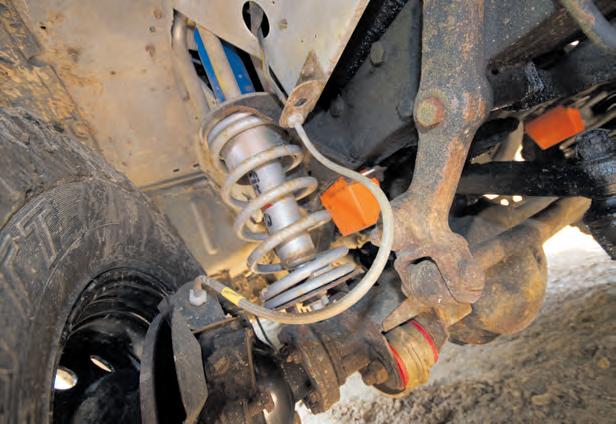

The standard steering set-up has been maintained, but Adrian has added a Terrafirma damper to help it deal with rough terrain. The whole lot is shrouded by a 5mm aluminium steering guard

was, but it was Adrian and Tom’s toy for a while before they switched to their Land Rovers.
Since then, Adrian has experienced many of the classic joys (or symptoms) you can expect from being a Discovery 1 owner. ‘I drove it around as standard for a while, but then the oil leaks started and the sunroof followed soon after. The sunroof was removed and we plated over it, and along with the Terrafirma suspension that’s been one of the best modifications we’ve made!’
While eradicating the sunroof was a smart move, taking the doors off the body didn’t turn out quite so well. ‘All the shims and bolts were an absolute
nightmare to line up again and get square and straight,’ admits Adrian.
With it being a Disco 1, at least, the truck’s chassis wasn’t a problem. And having been kept at Heathrow for nine years, rather than hacked through mud or used to reverse boat trailers into the briny, it had had a gentle life in every way. The bodies can be another story on these vehicles, but in this case it was just the paint that faded away and not the entire rigidity of the metal.
‘The body was stripped down and then resprayed,’ says Adrian. ‘We decided to keep it yellow, though, because it stands out and it’s different from the other dull colours you get on normal Discoverys.’
So why did it end up being a Discovery 1 he chose in the first place? ‘I’ve never really liked the Td5 to be honest, and also there’s too many unnecessary electrical gubbins. Let’s face it, you can’t beat a good old 300 lump!’
With off-roading in the family, Adrian didn’t build the Disco just to sit there looking yellow. As soon as it was ready, he was off getting muddy with Tom (whose Defender 90 was similarly brightly painted, albeit in red), and green lane runs with his local Rover club quickly followed. He also started
piloting Big Bird to air shows – a very nice touch being that after buying the truck, Adrian learned that it had a sister vehicle still in operation at a nearby airfield – as well used it for marshalling
and security at county shows in the south-east of England.
In a flock of depressing pigeon-coloured Discoverys, this is the peacock that’s going to rule the roost. Or the
canary. Either way, it’s guaranteed to get noticed wherever it goes – which, thanks to Adrian and Tom’s off-road skills and efforts in the workshop, is more or less anywhere.






n Access from 3pm on Saturday 5th July
n Driver & All Passengers Get in Free
n £1 General Yellow Cars
n £10 Grouped Yellow Display Vehicles
n Grouped Display Vehicles must be booked in advance



n Access on Sunday 6th July 10am-4pm
n Save 20% when you book in advance
n £8 per adult | £4 per child (5-15)
n (On the Gate £10 per adult | £5 per child)
n Free parking
n Under 5’s go free
n Dogs on short leads welcome
Real ale and cider tent | Street food vendors and food court | Picnic area


Shop from our many stalls selling everything from car accessories, camping equipment, gifts and novelties | Children’s inflatables and activities


Thousands of yellow cars are coming together for the biggest gathering of yellow cars on record. Bear witness to the spectacleit’s bound to put a smile on faces young and old alike! Take a look around our groups of display vehicles, including Super Cars, Classics, 4x4s and Custom Cars. And look out for some famous cars and faces you just might recognise.





















Rovers are returning to Bath & West this April for a weekend filled with Land Rovers! Exhibitors old and new will join us, selling everything from parts & accessories to tyres, clothing and toys Talk to overland adventure specialists about your next trip,
modification options with companies with the know-how and other experienced Land Rover owners.















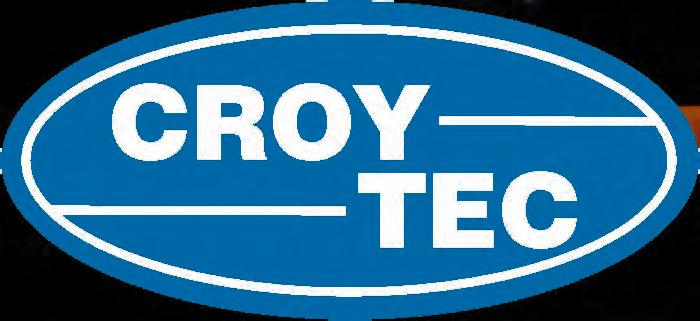



Croytec are dedicated to developing products with style
We give form to our components by machining detail into them with chamfered edges and rounded corners, under cuts, engraving and much more. We take time with care and attention to detail to ensure we deliver quality products. Our products have become a feature to many Land Rovers worldwide.





Alongside our aluminium interior and exterior trim range, our Special Order Service offers leather trim which can be designed to your requirements incorporating our colour anodised parts, to give you the ultimate Enhanced by Croytec Defender.
To advertise in The Landy, call our team on 01283 742969

We’re on Facebook: www.facebook.com/thelandyuk

This 88” Series III came to life on the day that Britain got one of its strangest number one hits. As it approaches its half-century, safe to say it has proved a whole lot longer-lived…

Pictures: Ed Morris

f you’re into music trivia, you’ll know the one about Britain’s shortest-lived Number 1 hit single. It was called Rodrigo’s Guitar Concerto de Aranjuez and it was by Manuel and the Music of the Mountains.
The new weekly chart used to be announced on a Tuesday lunchtime back then. And on 15 February 1976, Radio 1 DK Johnnie Walker announced that Manuel and the Music of the Mountains (real name Geoff Love, actually…) had the new number one. All very good
and sangrias all round… but then about an hour later, the charts people announced that they had counted it up wrong and suddenly December ’62 by The Four Seasons was on top instead. Poor old Manuel was relegated all the way down to number four.
This was a time when both Mamma Mia by Abba and Bohemian Rhapsody by Queen were sliding gently down the charts after their own rather more stickable reigns at number one. So it wasn’t a bad time for music. It was a
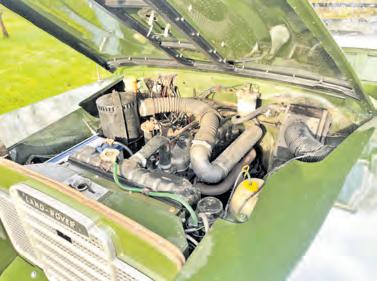
pretty painful time for Rodrigo’s Guitar Concerto de Aranjuez, though. But it was a fantastic time for pop trivia… It was also a good time for the 88” Series III you’re looking at here. Because that fateful day, which saw Manuel replace Slik’s Forever and Ever on top of the charts before himself being dumped off by the Four Seasons, was also the day it came into existence. Thus it’s just a few weeks away from its 49th birthday – which, with 49,320 on the clock, puts it on (taps earnestly

at calculator) just a squeak over 1000 miles a year.
Mind you, it must have been worked like a dog in its first three and a half decades – because all but 750 of those miles were done before 2013. Skews the averages a bit, huh? All the way up to, er, 1300 miles a year. Most of us have done that in a weekend.
Now, normally the Land Rovers we feature in these pages are unusual for some reason or another. They might be modified, restored or restified, they
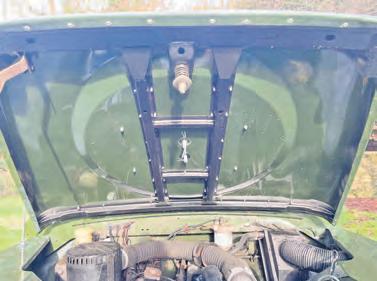
might have been special builds straight from the factory or they might have some sort of tale to tell that sets them apart from the rest.
This one doesn’t tick any of those boxes. But here we are singling it out for an equally good reason – which is that it’s just really, really nice.
It’s a Land Rover, of course it’s nice. Yes, we know. But you get what we mean. This 88 hasn’t had the life restored out of it. It wasn’t once owned by some spurious TV star or minor royal. It’s not ’special’ in that sense – but it’s never been off the road long-term or coddled away in storage. And if you can find a better one that ticks those boxes, you’re doing very well indeed. It’s the property of Ed Morris, who’s looked after it scrupulously – as, it would appear, have all the other five people to have owned it since that day in 1976 when it was first registered. One of them fitted it with a galvanised chassis, but the bulkhead, engine, gearbox and body panels are all the same items that were first saw the light of day back then.
That engine is a 2.25 diesel, which Ed says has ‘plenty of power.’ Not something you often hear about the 2.25 diesel, but the point is that it’s still fresh as a daisy. ‘It bursts into life on the turn of the key,’ he continues. ‘It runs as quiet and smooth as any Series Land Rover that I have ever seen.’ And he’s seen enough to know when he’s looking at a good engine bay. ‘It’s one of the best I’ve seen on a diesel Series III. Extremely clean, with the original stickers still in place.’ Somebody with too much paint and not enough judgement got to work on it at some point in the past, but Ed wasn’t going to let that one go and has repainted the block and head the way nature intended.
Talking of paint, is there anything more iconic than a Series Landy in Bronze Green with Limestone wheels?
The Mona Lisa, maybe. Bohemian Rhapsody, since we were on that subject. Stonehenge. The phrase ‘they


think it’s all over.’ Not a lot that goes about on four wheels, though.
And that’s what this is. When people talk about them being just the way they were when they left the showroom, all too often they’re talking about a truck that’s been completely remade from scratch in that image. Not to throw any shade at all on the fine art of restoration, but when you find one that looks original because it IS original… well, that’s when you’ve really got your hands on something to treasure. The word ‘unmolested’ is over-used and can refer to something that clearly has been molested or, at the other end of the scale, utterly neglected and left to rot, but Ed’s 88 looks to us like the definition of what it ought to mean. Unless you count a Bluetooth upgrade to the radio as molestation, at least.
Yes, a radio. This is a posh one. It’s fitted with original style Deluxe front seat backs and bases, too. The lower doors are trimmed with cards and the tops can be removed if you want to be able to see what you’re doing (and, in the summer, breathe), and when they’re in place all the windows that are meant to open do open. ‘The window channels are good and not rusted away, because the vehicle has been
kept under cover,’ explains Ed – who goes on to say that the Series III has never been used as a working truck. That’ll be why the rear doesn’t look like a grenade’s gone off in it.
‘It has been carefully maintained to keep as many original parts as possible,’ says Ed. ‘It has been so well kept that it has never needed a full restoration, just careful preservation. This makes it a cleaner and more original car.’ Cleaner, more original and with a galvanised chassis. It doesn’t get much better than that.
As if to prove the point, Ed mentions that he has the 88 looked after by one of the best Land Rover mechanics in the country. Daryl Birdfield in Loxwood, West Sussex, since you ask. So it’s not just one that’s been well preserved –it’s one that’s being well preserved, too.
‘You’d have to go a long way to find a better vehicle,’ he says. ‘Anything that required attention has been done; it is now faultless. You could pick this up and drive it confidently anywhere in the UK, it’s so sound.’ As if to prove the point, this summer he took it on a four-day road trip from his home in Dorking all the way to the Isle of Wight. ‘It flew down there effortlessly. No roof all the way!’
For sure, Surrey to the Isle of Wight is not quite London to Singapore. But there are plenty of Series trucks you wouldn’t want to try driving from Surrey to, well, Surrey – and that includes some of the restored variety.
Ed’s 88 hasn’t been restored because it hasn’t needed to be, and he’s kept it that way ever since becoming owner number six. Faultless? Well, put it in a hit parade of classic Land Rovers and it’ll stand a very strong chance of
going straight in at number one. And it won’t just stay there for an hour, either.
Thanks to Ed Morris for his help with this article. His Series III is currently listed for sale on page 30 of this issue


Manufactured to exacting standards to maintain your vehicle’s ride and handling.
PROEVO+ Steering and Suspension products are selected to meet the stringent level of performance & durability associated with Land Rover and Jaguar vehicles.
PROEVO+ provides customers:
> Exceptional value
> Premium quality
> Built to OE specification
> Extended warranty




















All the information you need – in one place – to buy your perfect Landy
There have been many kinds of military Land Rover. But for most people, the Lightweight is the definitive example of what is a noble breed.
It might just be the Land-Rover-onlydifferent looks. It might just be because
your Action Man had one. Either way, the Lightweight gets a lot of love whether as a classic or a military motor.
Of course, there was a time when they got a lot of love as a thing to cut up and plonk on a shortened Range Rover chassis. There were some outstanding
Lightweight hybrids back in the day, and some of those are still around – and still proving hard to beat in CCV trials.
But these days, if you find an original or even just complete Lightweight, it’s treasure. But when the Army sold them off for sweeties, nobody would ever have believed how much these old war wagons would one day be worth.
Lightweights appeal to military vehicle fans and Land Rover enthusiasts who
Series I (1948-1958) £5000-£85,000

The Series I, particularly in its 80” guise, is the most sought-after of
all Land Rovers. Its engineering and design give it real charisma, but parts aren’t readily available. Restoration projects require deep pockets, but see it through and the result will be worth mega bucks.
Gone are the days where you could use a Series I as an actual Land Rover. Because with restored examples changing hands
Series III (1971-1985)


These military vehicles can easily be distinguished from regular

terms, keeping the same 2.25-litre engines throughout the length of its production run. In 1980, the engines switched to a more durable five-bearing crank rather than the old threebearing setup. The transmission also received syncromesh on all forward gears to make it easier to live with.
Land Rovers. To mimic the civvy Series machines, the Series III model built from 1972 onwards, also had its headlights switched out to the wings.
Lightweights add an extra dimension to owning a Land Rover. Their military history and details mean you get a truck with more stories to tell – and that stands
for millionaire money, preservation is the aim of the game.
The earlier the vehicle, the more it will be worth. The sky’s the limit – but can you really put a price on such an icon?
Pros: Heritage, charm, a true classic, the original Land Rover Cons: Availability of parts, price tag on early 80s
£2500-£35,000
They still carry the simplicity of earlier Land Rovers, but the Series III remains the most affordable way into owning a leafer.
Pros: Most affordable route into Series ownership. Still has the Series pedigree. Parts still widely available
Cons: Not yet as desirable as the earlier Series models
out from the crowd. They’re a rare breed, though – so if you’ve got one, it’s worth keeping hold of.
Pros: Not like all the other Land Rovers out there. Military background. Lovely 2.25 petrol
Cons: Appearance isn’t to everyone’s taste. Exclusivity over regular models means they command a price premium
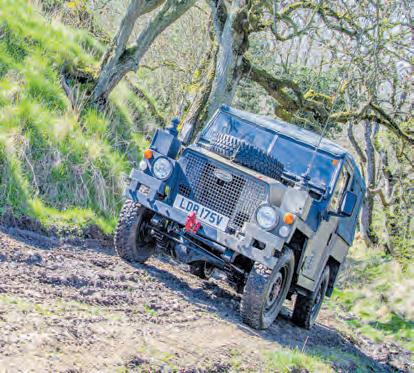


Forward Control Land Rovers are a cult within a cult. They’re a real


much of that early charm. Prices seem to have peaked now, however they still remain strong for good examples.
A 2.25 petrol 88” would be our pick, as the diesel engines were underpowered and rather noisy.
The Series II/IIA has a wider stance than its predecessor and adds an extra (thin) layer of
rarity – with all the cachet, pride and immense awkwardness that comes with this status.
By ‘rare’, we’re talking about less than 2500 Series IIA FCs in total. And they tended to have a very hard life, so not many have survived to tell the tale.
Forward-Control models differed from everyday Series IIs by
the time came for demob. They were flogged off at very low prices and turned into off-road toys –not something you’d do with one today, given the rarity and classic value they’ve taken on.
Compared to the IIA/IIB FC, the 101 is more fun thanks to its V8 engine. It’s still a military tool, though – some still have fixtures
Insure a Lightweight with Adrian Flux from £66
• Based on a standard 1978 Series III 2.25 petrol. Valued at £20,000, 3000 miles per year. 50 year old driver, fully comp, £200 excess
£2500-£40,000
refinement. While the engines have excellent longevity, they need to have been maintained properly. Be thorough in your checks, both under the bonnet and underneath the body.
Pros: A sound investment to restore – and enjoy Cons: Bulkheads and chassis rot, springs prone to seizing
having heavy-duty ENV axles, but engine-wise they had the familiar 2.25 petrol and diesel lumps. So, don’t expect performance – but do expect to be given an ‘interesting’ time in the workshop…
Pros: A Land Rover like no other, if that’s what you want Cons: Especially brutal to drive, and to find parts
and fittings from their Army life, which adds interest. This is a vehicle for enthusiasts, though, with costs that are sky-high even by Land Rover standards. Pros: Master of the road. Lovely V8 soundtrack. Everybody who sees one loves it Cons: Monumental running costs. Expensive to buy, too







The Tdi engine, which arrived with the Defender name, can last for
decades if it’s looked after. And with prices having dropped recently, they’re more affordable than they have been for many years.
The good thing about the earlier 200Tdi is that it’s simpler than the later 300. What you gain here you lose in refinement, but this is seen by many experts as the best Defender of them all.
The LT77 gearbox in the 200 Tdi is more truck-like than the later R380, and these vehicles didn’t come with bling. Just be sure it’s an original Tdi you’re getting, not an old Discovery conversion.
Pros: The perfect combination of tradition and modernity
Cons: Lots of horrible and/or deceptive ones around
Defender 300 Tdi (1994-1998) £3500-£40,000

replaced, though

The last Defenders gained modern 2.4 and 2.2 TDCi engines and
the two are related. It’s much more refined and smoother to drive, though there are more electronics involved so later versions in particular are less of a DIY fix.
The arrival of the 300 Tdi also brought with it the R380 gearbox. This used to have a terrible reputation for relability, but most have been put right by now and they’ve

introduced the
become sought after for their light clutch and better shift action. It was during the Tdi era that Defenders started getting things like alloys, too. You might even find one that’s not been off-road… Pros: Strength and simplicity. Perhaps the definitive Defender Cons: Sure to be very different to when it left the factory
(2007-2016) £6500-£275,000
smooth six-speed gearboxes, They still had phenomenal off-road ability and were even okay to sit in. Famously, this was the Defender that actually had a dashboard
You can find special editions and boutique conversions to TDCi models that cost obscene amounts of money. You will pay a premium for any these late
Defenders, however the era of skyrocketing prices seems to be over and TDCis have dropped further in value than the Td5. So a good 2.2. could now be quite a shrewd investment
Pros: Efficiency, creature comforts, off-road prowess
Cons: Price, electronics, TDCi engine is unloved


If the subject of the new Defender comes up in enthusiast circles, try






130 that changed the most. That’s because unlike the old 127, it was built on a proper chassis of its own rather than a stretched 110 frame.
The advent of the Tdi engine was the making of the 130, too. At last, Land Rover could make them pull properly without returning single-figure fuel economy by using a hard-worked V8.
a strong performer. It does lend itself to being tuned though, so watch out for abused ones and knackered examples that have been pushed beyond the limit.
As with all Defenders, you’ll need a rear crossmember sooner or later – or even a new chassis.




As a result, you’ll find many more original(ish) 130s than 127s. Some are even still in service with the utility companies they were built for. If you want a Defender for overlanding, look no further. Pros:
Despite having more electronics than the Tdi, a Td5 Defender can still be a DIY machine. Parts are in plentiful supply,
£45,000-£185,000
to steer it away on to something safer. Like Brexit, for example.
Much as it may infuriate purists, however, the Defender is actually a very wonderful thing. It’s kind of like an old one, only with space, comfort and equipment.
The big difference is that you can’t work on it yourself. This goes for maintenance and, crucially,






making modifications – a market Land Rover wants to take back and have for itself. It won’t hold its value long-term the way an original-shaper does, either. But this is still a superb vehicle.
Pros: Comfort, capability, rugged fitness for purpose
Cons: Not cheap to buy. Lacks the old one’s basic charm















It’s also a notable classic in its own way, as it heralded the start of the company’s modern era. It has its issues, though. The viscous coupling is expensive to replace and can be upset simply by running mismatched tyres.
The 1.8 petrol used to be notorious for head gasket failures. Today’s replacements are much
more robust, but a late diesel is your best bet. Even these can go calamitously wrong, though. This was a more complex car than it needed to be, and buying one for sweeties now doesn’t change that.
Pros: Cheap to buy, no big rust issues, surprisingly able off-road Cons: All sorts of things can go wrong, some very expensively
Range Rover Classic (1970-96) £2500-£225,000

are people who do just that, preferring to invest new-car money in a restoration than spending it on a current model.
It’s a smart policy, too. An early two-door can cost mega money, but any Classic will appreciate in value if kept in good condition –and sought-after rarities like the CSK and LSE can be a gold mine.
Range Rover (2002-12)
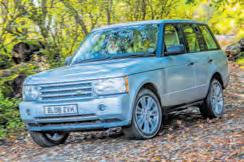
The Mk3 Range Rover hit new heights of luxury and was more re-

liable than the P38. It’ll still cost a lot to run, however, and drivetrain faults and underbody corrosion are not unknown.
The TDV8 engine is sublime, but you’ll pay more to get one –especially the 4.4, though the 3.6 has all the power you need. The V8 petrol, on the other hand, is temptingly cheap. Guess why…
An awful lot of Rangeys have been neglected and/or abused, and you can still buy they cheap. But if you’ve got the skills, and access to parts, restoring one would be the ultimate hobby that pays.
Pros: Most usable classic Land Rover, V8 power, ride quality
Cons: Rust, availability of parts for early models
£2200-£24,000
This isn’t a DIY motor, but it certainly is a Range Rover, with brilliant off-road and towing skills. It relies a lot on electronics, but they work wonders – and the deepdown engineering is very robust.
Pros: Great off-road, luxury, image, TDV8 powerplants
Cons: Very complex. Huge running costs




Freelander 2 (2006-2015) £2000-£15,500

The
was
it replaced. It’s a refined and affordable SUV with a strong engine, good equipment and a decent level of practicality.
It’s become one of the most reliable Land Rovers out there, too.
But do be aware of the rear diff and Haldex unit for costly outlays.
The 2.2-litre diesel engine is a strong performer, though for a bargain search out one with the unpopular 3.2 petrol unit. Either way, it’s a fine SUV to drive. Prices have fallen since the production ended, too – £15,000 now gets you a late one on tiny miles.
Pros: Reliability, refinement, economy of diesel engine
Cons: Transmissions can wear quickly if used for towing

own, even today. The problem is that they’re very complex and very, very good at going wrong.
spent at least part of its life being worked on by idiots
The fifth-generation Range Rover takes
position as
Land Rovers, you’re likely to be thinking about how many real ones you could buy with this sort of money. It wouldn’t make a bad way to tow your collection about the place, though…
Cons: To at least 99% of people it’s utterly divorced from reality Range Rover (2022-on) £99,000-£220,000
car to greater extremes than ever, with lavish equipment and endless opportunities for personalisation. It’s a supreme lifestyle wagon for the rich: to many of Land Rover’s traditional fans, on the other hand, it’s the supreme irrelevance.
If you can afford one, few cars could be as pleasing. However if you can afford one and you love

The second-generation Range Rover Sport is 400kg lighter than

the original, meaning it’s almost economical to run. It feels really nimble and agile on the road, too, and it comes with a range of engines giving it a brisk turn of pace. Some won’t like the flamboyant posture, while others will love it. Either way, inside the cabin it’s very nearly as luxurious as the full-house Range Rover.
Pros: Immense prestige, and sublime both to be in and drive
the masses. Given that it was the company’s fastest-selling vehicle, they clearly hit the brief, even if it wasn’t for the traditional Land Rover owner.
It’s actually still a capable thing off-tarmac – but it’s definitely more at home on the road.
Nevertheless, it is economical by Land Rover standards and
If you can afford the SVR model, you’ve got a super-SUV with rap star image. In every case, though, running costs will be vast. Parts don’t get any cheaper because you bought it second-hand…
Pros: Performance, refinement, handling, glorious interior
A Mk2 Rangey in good working order is still a sensational car to
Air suspension failure is the norm. Head gaskets can let go. Electronics are laughably flaky. And parts can cost the earth – as will the labour bills. Perhaps worst of all, nowadays it’s very hard to find one you can be sure hasn’t
Still, you’ll get a classy motor with proper off-road and towing skills. It’s becoming a classic, too, and prices are still tiny considering everything you get.
Pros: Luxury, price, a Land Rover that doesn’t rust Cons: Electrics. Be very afraid Range Rover (1994-2002) £1000-£29,000
Range Rover (2012-22) £15,000-£75,000

range supply copious amounts of power, and its road manners are absolutely impeccable.
It’s startlingly capable off-road, too, even if getting one muddy would feel like bad form. Most that leave the tarmac probably do so only when their owners are in the mood to blow some grouse out of the sky.
Inside, the Range Rover’s cabin is superb, with sumptuous trim and cutting-edge equipment. Prices are, of course, as immense as the vehicle itself. But if you can afford it, so too is the presence a Rangey will give you.
Pros: Class, luxury, engines, vast all-round capability
Cons: Price
Range Rover Sport (2005-2013) £2000-£17,500

The Sport is mechanically similar to the Discovery 3 – meaning it’s
a supreme off-roader as well as being a funky road ride. It doesn’t handle like a sports car, but is agile enough for an SUV.
A Discovery of the same era is far more practical, however, while a full-fat Rangey has more class.
The Sport is still a massively able tow barge, though, in addition to all its other virtues.
You’re looking at a car which many people associate with rich chavs and criminals, however. And being based on the Discovery 3, it can’t help but share that vehicle’s reputation as a money pit.
Pros: Decent performance and all-round dynamics
Cons: A Disco 3 is more usable. Expect horrific running costs
Range Rover Sport (2022-on) £80,500-£145,000

Hilariously, this is what counts as the affordable way in to owning a
because there are so many out there, used prices are tempting. There’s a Convertible model, too, as well as three and five-door tin-tops. We say stick to the latter, and be sure to get one with 4WD. Pros:
Cons: Marmite image. Pricey to buy and run Range Rover Sport (2013-22) £13,500-£65,000 When

new Range Rover. The Sport is less about being chauffeur driven and more about lording it over other aspirational school runners, but once again it’ll be lovely to drive.
Like the full fat Range Rover (a phrase which has never felt more appropriate), the Sport is available with an old-school V8 engine that gives you racecar performance in
has adopted a similiar back end to the
It’s not just the exterior that mimics the looks of the larger vehicle, however, as the Evoque has gained the latest Touch Pro Duo tech and a hike in quality.
The main highlight of the new Evoque is the fact the majority of the range is made up of mild
return for NASA-level emissions. Most UK customers with opt for an altogether healthier plug-in hybrid, but they’ll still get a vehicle that’s brutally fast a well as being able to do the normal Range Rover stuff.
Pros: Smooth, refined, comfy… and game for a laugh, too
Cons: Still hasn’t quite shed its proceeds-of-crime image
hybrids, available with diesel and petrol engines combining to an electric motor. Only the base




ELEVATE YOUR LAND ROVER’S PERFORMANCE AND STYLE
Premium alloy or steel wheels , built to handle the toughest adventures. Market-leading tyres , manufactured to conquer the most challenging terrains.







The Velar a competent cruiser and has received numerous accolades
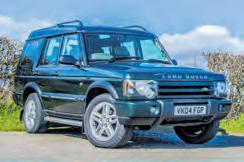
because of its particularly handsome exterior. It’s based upon the same architecture as the Jaguar F-Pace but has greater off-road ability and is available with a wide choice of engines, most of which combine good economy with usable everyday performance.
The interior was Land Rover’s most advanced cabin yet when
most reliable units ever. It drives well, too – mated to a manual box it has more guts even than the V8 option, which is surprisingly bland but predictably thirsty.
Whereas the Disco 1 was prone to body rust, the D2 is fine here. Instead, its chassis rots like a carrot, especially towards the back end. Also at the back, seven-seat
it came out. It was very much designed to be a trend setter.
But is there a whiff of style over substance? Well, it’s a very good SUV. But you don’t half pay a premium for those suave looks...
Pros: Stylish design, chic cabin, excellent tech features
Cons: Feels like an indulgence, especially at such a high price
models had air-suspension, with all the horrors that brings.
Mainly, D2 owners will tell you about rogue electronics. And leaky sunroofs. They still love their trucks, though, which says a lot.
Pros: Td5 power and reliability, great all-rounder, lots of choice
Cons: Chassis rust, electronics, leaky sunroofs, air suspension
Discovery 4 (2009-2017) £6000-£30,000

Somewhere between a facelift and a whole new model, the Disco 4
is basically an evolution of the 3. It looks similar and is still a practicality monster, as well as being hugely impressive on and off-road and a hero in front of a trailer, but despite being only subtly tweaked inside feels far more luxurious.
That hasn’t prevented it from suffering all the same issues as time has gone on. You need to
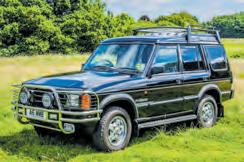
with the same 100” wheelbase and a slick body containing a spacious, flexible cabin. It was well equipped and refined, and it came with the wonderful Tdi engine.
Over time, the Disco’s epic ability meant almost all of them were hammered at playdays. Lower body rust is a big killer, too. So it’s rare to find a good one now,

and capable off-road, genuinely luxurious and a giant of a tow truck, and as well as being able to seat seven adults it can be turned into a van with a totally flat rear load area.
But it was also astonishingly complex, and these days it has a reputation as a money pit.
Air suspension and electronic




and when you do they tend to be priced with a lot of optimism. Very early ones in tip-top condition are full-on classics, too. For a sound one to own, we’d look for a tidy 300Tdi.
Pros: Price, practicality, parts availability. Epic off-road ability
Cons: The body rusts like it’s been doused in sea water
handbrakes are big sources of woe, cam belts are a body-off job to change and rust is becoming more of an issue. Get a good one, though, and it’s all the car you’ll ever need.
Pros: Good at everything. Lots of accessories available now
Cons: The phrase ‘money
start off by buying the best you can possibly afford – and at the top of the market, they don’t come cheap. Get it right, though, and this is as good as a modern Land Rover has ever been.
Pros: Most LR fans’ idea of what a Range Rover should be like Cons: Still a potential money pit, and the best are expensive
Discovery Sport (2015-19) £600-£22,000


body and dishes up an appealing all-round blend of comfort, kit and general driving manners.The third row of seats is only suitable for little ‘uns, though, and off-road it’s a Discovery in name only.
It’s a more practical proposition than the closely related Evoque, and you won’t need to live with the fear of Posh Spice jokes.

There are some tidy deals to be had on late high-spec examples now – though if you do a search for ‘Ingenium reliability’, you might end up deciding to buy something Japanese instead…
Pros: Seven seats. Practical, and capable enough off-road
Cons: Back seats only for kids. Reliability worries over engines



it to be – but it’s much more luxurious than anything else short of a Range Rover.
All the engines in the range are refined and flexible, and its chassis is remarkably supple for such a big vehicle. There’s no end of electronics working away in the background, but the effect is very convincing indeed.
£13,500-£77,000
One in five Disco sales go to the commercial model, which is available as a high-spec luxury tax buster. But every model is a supremely able, flexible all-rounder for work and play.
Pros: Immense blend of class, comfort and practicality
Cons: Feels more like a softroader than a proper Discovery




> Roof Racks & Accessories
> Underbody Protection
> Recovery Equipment
> Raised Air Intake
> Rock Sliders





















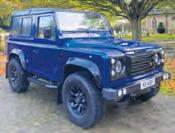

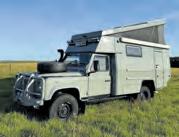

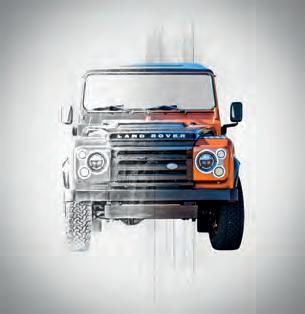
Series II 109 (1960). 89,000 miles. Barn find. Needs light commissioning. Chassis looks solid, bulkhead needs welding but not fully rotten. Comes with service kit. £4490. Bournemouth. 07968 557807 02/25/003


Defender 130 2.4 TDCi (2010). 137,000 miles. New engine, box and LOF clutch. Stage 1 tune. Hannibal rack and awning, LEDs, Optimill wheel boss etc. MOT Aug. £28,500. South Queensferry. 07872 181734 13/24/004


Defender 90 off-roader (1986). Road legal. 300Tdi, LT77, 1.4 T-case. Snorkel, Warn 8274, ARBs, Ashcroft shafts, cage, Insas, 3” lift, RAC twist kit, LEDs, Gwyn Lewis props, Sparco buckets. £9995. Basildon. 07749 033834 1/25/003



Defender 90 300 Tdi (1986). Ex-MOD winterised soft-top. Disco box and axles, uprated brakes, lifted suspension, Cooper STTs. Home-made modified hard-top. MOT May. £5800. Chesterfield. 07891 579071 02/25/006 Range Rover 6.2 GMC V8 diesel (1982). 190,300 miles. Owned 29 years, over £30k spent inc £12k crate engine. Brooklands bodykit. Stainless side pipes. No rot or leaks. £16,000. Barnsley. 07931 655911 02/25/005
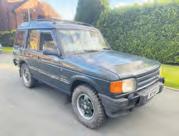































































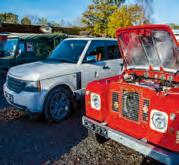
















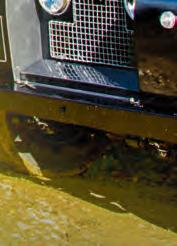








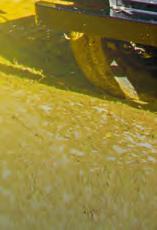









Leaf Springs
241283G SWB Petrol Front 9 Leaf RHS
242863G SWB Petrol Front 9 Leaf LHS
265627G SWB Diesel Front 11 Leaf RHS
264563G SWB & LWB Diesel Front 11 Leaf LHS
517588G SWB Rear 11 Leaf RHS
517589G SWB Rear 11 Leaf LHS
276034G LWB Front 11 Leaf RHS
265627G LWB Diesel & Petrol Front 11 Leaf RHS
279678G LWB Rear 10 Leaf RHS
279679G LWB Rear 10 Leaf LHS
272967G LWB Heavy-duty Rear 8 Leaf RHS
272968G LWB Heavy-duty Rear 8 Leaf LHS
535173G LWB - 1 Ton Rear 9 Leaf RHS & LHS
562631G Lightweight Rear 7 Leaf RHS
562632G Lightweight Rear 7 Leaf LHS





Parabolic Springs
The Britpart range of high quality parabolic springs are made to the exacting specifications as fitted to Santana specification vehicles. Manufactured to an OEM standard and quality by using the correct grade alloy steel - 60SiCr8. Heat treated consisting of hardening & tempering and springs are shot peened before painting. These parabolic springs will bring a comfortable ride and improved handling to your Series vehicle. Note - Includes ‘U’ bolts and nuts.

DA4106 Series - SWB/LWB 2 Leaf Front kit pair
DA4107 Series - SWB 3 Leaf Rear kit pair

DA2003 Series - LWB 4 Leaf Rear kit pair

These springs are manufactured to the original OEM specification and constructed from the correct grade alloy steel - 60SiCr8. Each leaf is heat treated consisting of hardening & tempering as the Land Rover engineers specified. Fitted with OEM bushes, these leaf springs will therefore give you years of service with the correct ride comfort for your Series vehicle.







“Years of service with the correct ride comfort...”




